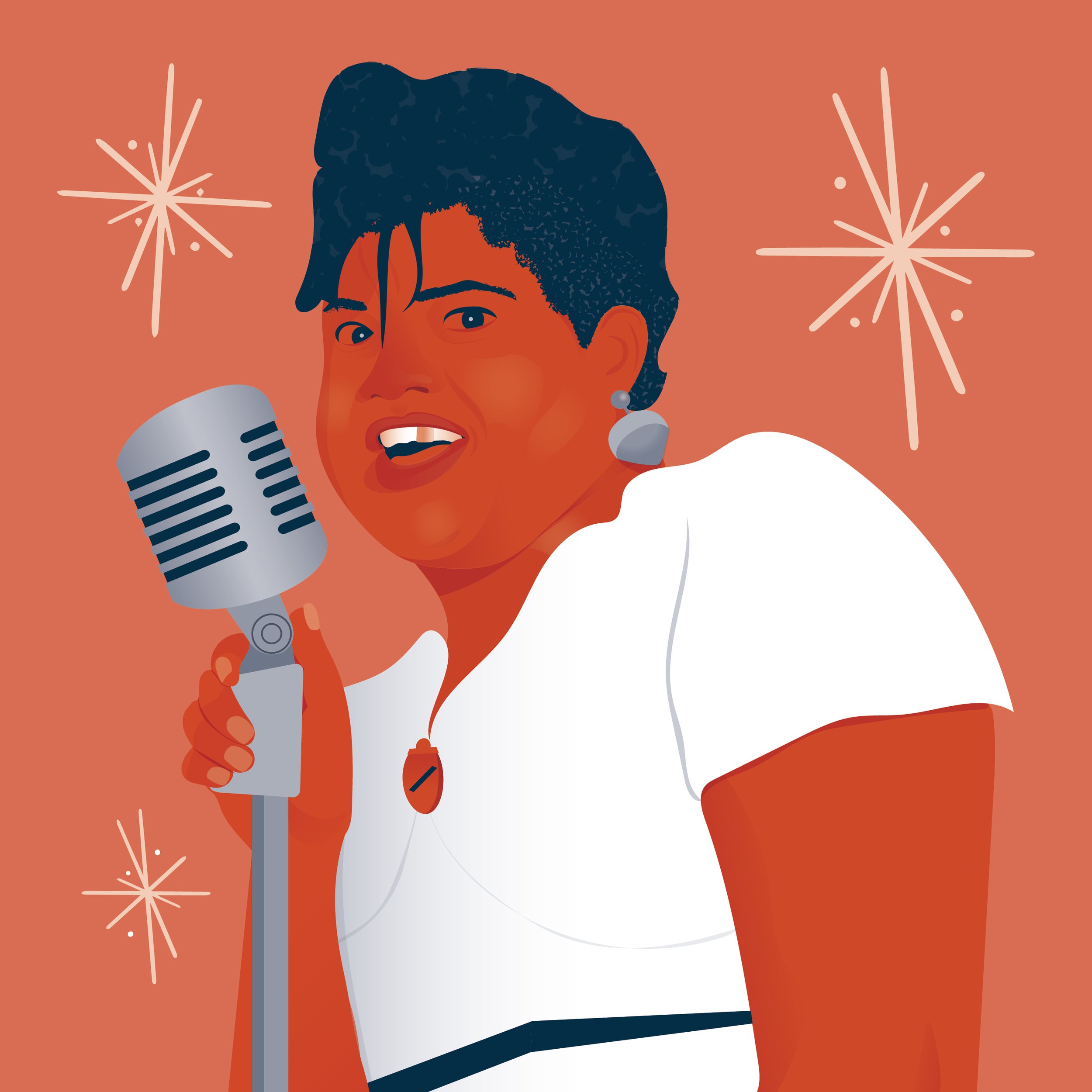
Part 2—Martha & The Vandellas: Igniting a Hitsville Heat Wave
Martha Reeves had not just cracked the door open at Motown with “I’ll Have to Let Him Go;” she had practically kicked it down with her undeniable talent and her remarkable ability to shine in the face of unexpected challenges. In the aftermath, Mickey Stevenson swiftly summoned Reeves and the Vels for another round of session work just days after, setting the stage for a series of events that would reshape the trajectory of the group.

Part 1–Martha & The Vandellas: Destiny in a Day
Imagine the vibrant streets of 1957 Detroit, where the rhythm of Motown is still years away. In the heart of it all, there’s a tenacious mother, her eyes filled with dreams for her talented daughter, came across a mention in the newspaper about an audition nearby. As the daughter auditioned in the local YMCA, a man named Edward Larkins with an uncanny ability to spot talent and assemble groups was watching very closely. On this fateful day, destiny orchestrates an unexpected twist. While the daughter possessed immense talent and would indeed achieve greatness with her voice, the spotlight of stardom wouldn’t be hers ultimately to claim.

Part 2–The Ronettes: Across the Pond
Spector’s eagerness to get Ronnie, Estelle, and Nedra back into the studio after the success generated by “Be My Baby” intensified by each passing minute. Fueled by inspiration, he penned “Baby, I Love You,” a song he believed had the potential to replicate their previous triumph. In a surprising move, he made the rash decision to temporarily pull Ronnie from her scheduled appearance on Dick Clark’s “Caravan of Stars” tour, a nationwide musical journey. Their cousin Elaine took Ronnie's place.

Part 1 —The Ronettes: Bonded by Blood
In the bustling heart of New York City’s Spanish Harlem, three talented and determined young women embarked on a musical journey that would change their lives forever. Sisters Veronica and Estelle Bennett and their cousin Nedra Talley forged a tight-knit bond that extended beyond bloodlines.

The Crystals, The Blossoms, and the Curse of Phil Spector
In their pursuit of studio time and to make an impression on record executives, numerous girl and guy groups of the 1960s frequently chose to turn a blind eye to the exploitation of their talents. Many more groups were unaware that they were being exploited, as the allure of fame and fortune often led them to accept sometimes absurd directions without questioning. Recording songs they didn’t particularly like was common.

The Marvelettes: Five Black Girls From the ‘Burbs Put Motown on the Map
Right from the start, they doubted their prospects. With humility, the quintet of young ladies hailing from Inkster, Michigan, made the decision to call themselves the Casinyets (abbreviated from “We can’t sing yet”) to meet the eligibility criteria for the high school talent competition. True to their moniker, they secured a fourth-place finish, narrowly missing the opportunity to qualify for an audition with Motown Records. However, a perceptive school administrator recognized the group’s latent potential, perhaps appreciating the self-deprecating name they had adopted, and graciously granted them an audition anyway.

The Shirelles: From High School Halls to America’s Halls of Fame
The freshly inaugurated Passaic High School auditorium had barely seen a month pass by before four Black girls graced its stage as the Poquellos. Alan Coen, a senior in 1957 at the integrated high school in northern New Jersey, vividly recalled those moments. “We used to have a talent assembly in the auditorium,” Coen said. “In those days, the students that would perform would play violin or piano. Then Shirley Owens came on and they did their thing. It was so fantastic.”

The Bobbettes: The “Not-So-Nice” Girls That Started It All
They weren’t known for being mean; the Bobbettes simply held no fondness for their math teacher. So, they composed a song titled “Mr. Lee” explaining how they felt.

Gents, Gals, and Glam
Throughout history, women have faced challenges imposed by society, yet they have risen with remarkable strength, wisdom, and harmony. These qualities are often attributed to their male counterparts, but it must be recognized that women achieved them without the same privileges.

Soul to the Silver Screen
Opportunities for Black talent were few and far between the realm of television programming. In 1939, NBC granted Ethel Waters a short-lived 15-minute variety show, but such instances were the exception rather than the norm. Another notable example was the Hazel Scott Show, which debuted in July 1950 but was abruptly canceled in September after her appearance before the House Un-American Activities Committee.

How the Dance Craze Elevated Black Visibility
“The most important thing [during the first ten years of the Ed Sullivan Show] is that we’ve put on everything but bigotry,” Ed Sullivan remarked in an interview to the Newspaper Enterprise Association. “When the show first started in ’48, I had a meeting with the sponsors. There were some Southern dealers present and they asked if I intended to put on Negroes. I said ‘yes.’ They said I shouldn’t, but I convinced them I wasn’t going to change my mind. And you know something? We’ve gone over very well in the South. Never had a bit of trouble.”

Mohair and Manners
In the Motown realm, Maxine Powell faced an intriguing challenge with the one and only Miss Diane Ross, new to the label. Ross had an unfortunate habit of bulging her eyes while belting out her tunes, and this peculiar blunder threatened to bring down her fellow Supremes. Powell knew she had her work cut out for her.

Selling the First Soul Hits of the 1960s: Setting Up Shop
In 1960, optimism was on the rise following the landmark ruling in Brown v. Board of Education six years earlier, which declared racial segregation in public schools unconstitutional. Despite this ruling, little guidance was provided on how to desegregate schools, and many jurisdictions were slow—often intentionally—to find solutions. As a result, public facilities such as buses, restaurants, theaters, courtrooms, restrooms, and beaches remained largely segregated.

White Supremacy and the Suppression of Black Excellence
When “The Nat King Cole Show” aired on NBC in 1956, it was significant milestone and showcased his talent as a Black musician and entertainer. Its popularity did not shield it from racial onslaught so prevalent during this changing time.

The Birth of Rock & Roll, White and Black Partnerships
The first “true” Rock & Roll song was the byproduct of an integrated partnership in 1951. “Rocket 88,” recorded by Ike Turner and Jackie Brenston at the white-owned Sun Studio in Memphis, is known for its distorted guitar, piercing sax solo, and driving riff.

“You’re Listening to 50,000 Watts of Goodwill, WDIA Memphis”
When Nat D. Williams took to the airwaves as WDIA’s first Black disc jockey in 1948, the Black community not only tuned in but celebrated an incredible milestone.

What is Soul?
"Soul is a ham hock in your cornflakes," sang the band Funkadelic. Lead singer George Clinton posed the question "What is Soul?" in 1970 in the debut album, also titled Funkadelic. Soul was so prevalent and meant many things to many people and the question was a loaded one…
